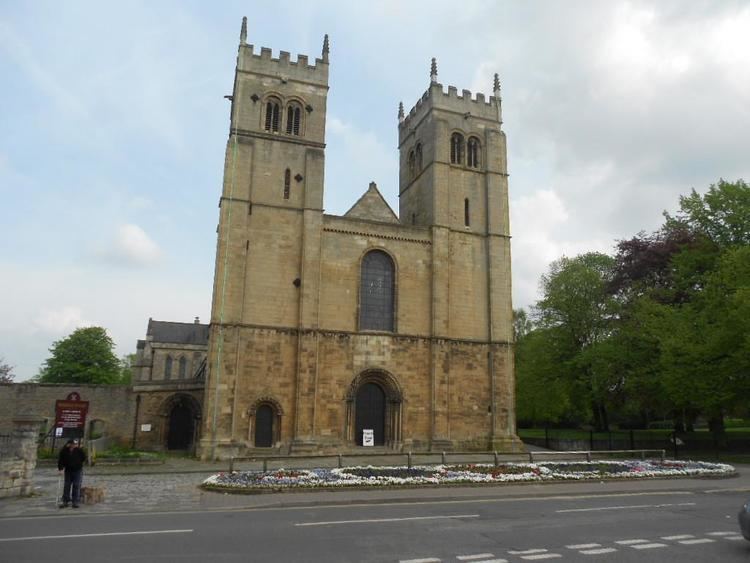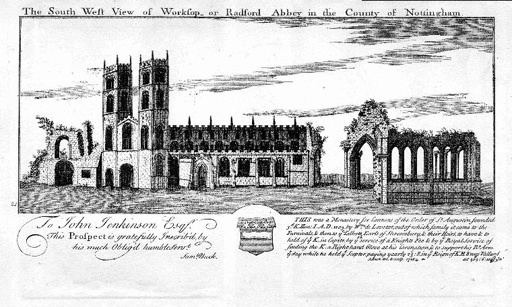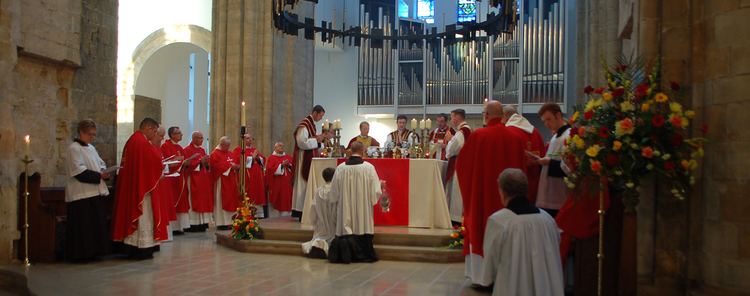Parish Worksop Priory Archdeaconry Newark-on-Trent | Churchmanship Anglo Catholic Vicar(s) Fr Nicolas Spicer SSC Asst Curate(s) Fr Stephen Parker SSC Dedications Mary, Cuthbert | |
 | ||
Website www.worksoppriory.co.uk Assistant priest(s) The Rt Revd Martyn Jarrett SSC Similar Langold Country Park, Mr Straw's House, Clumber Park, Creswell Crags, Worksop railway station | ||
Worksop priory in the snow 1
Worksop Priory (formally the Priory Church of Our Lady and Saint Cuthbert, Worksop) is a Church of England parish church and former priory in the town of Worksop, Nottinghamshire, part of the Diocese of Southwell and Nottingham and under the episcopal care of the Bishop of Beverley.
Contents
- Worksop priory in the snow 1
- Cambridge minor at worksop priory
- History
- Repairs and restorations
- Priors of Worksop
- Vicars of Worksop
- Organ
- Organists
- References

The church is Grade I listed by the Department for Culture, Media and Sport as a building of outstanding architectural or historic interest.

Cambridge minor at worksop priory
History
The initial land grant and monies to establish the Augustinian priory were made by William de Lovetot in 1103. In 1187 Philip, the Canon of Lincoln Cathedral, gave the Worksop Bestiary, an illuminated manuscript that is now at the Morgan Library & Museum in New York. In the 14th century the Tickhill Psalter was produced by the prior, John de Tickhill.

The priory was dissolved on the orders of Henry VIII on 15 November 1539. The property was granted to Francis Talbot, 5th Earl of Shrewsbury on condition that the Earl should provide a glove for the right hand of the sovereign at the coronation. This tradition continues to this day.

Over time most of the former monastic buildings were plundered for their stone, but the nave of the church was saved for use as a parish church, and the early 14th century gatehouse was used as a school. Extensive restoration and enlargements of the church began in the mid-19th century and continued through the 20th century.
Repairs and restorations

Priors of Worksop
Source: [2]
Vicars of Worksop
Source: [3]
Organ
The painted organ case was designed by Peter Collins, in co-operation with the architects, Laurence King and Partners, and constructed in mahogany in its main parts with pine-cored block wood panels. The case has a tonal as well as an architectural function, mixing the sound of the pipes and projecting it forwards as a blended whole. The specification was drawn up by David Butterworth and is almost identical to that of St Mary's Church, Nottingham. The pipes, of which there are 1634, are of various materials ranging in tin content from 90% in the façade pipes to 20% for some flute stops. Copper and pine are used for other registers. With the exception of 24 small pipes in the pedal case, all the front pipes are speaking. The reed pipes are by Giesecke of Germany; the flues by Stinkins of Holland and Peter Collins; the cymbelstern is by Laukhuff, also of Germany.
The console at the foot of the central display pipes is constructed of oak; the naturals are of hard ‘blackwood' and the accidentals are white resin topped. The manual compass is of 56 notes; the pedal compass of 30 notes.
The style of voicing and the general approach to its construction has origins in the 17th and 18th centuries, rather than the more familiar instrument to be found in England. The balance of stops is in keeping with classical registration and the ‘Werk-Prinzip' of the case is designed to project the sound into the priory building.
For the mechanism of the key and pedal action, direct connection by trackers of thin wood are used to the control valves, giving the performer control over the attack and decay of each note. The stop action is electric. There are six pistons to each department and six toe levers for the pedal department. There are also eight general pistons.
The organ was reconstructed in 1996 by Wood of Huddersfield. It was cleaned and regulated and the soundboards were reconstructed. The keys were renewed; Swell Octave 2 ft replaced with new pipework by Stinkens; Cymbelstern added; entire stop action (slider solenoids excepted) was remade
with Alan Taylor solid state; sequencer added.
